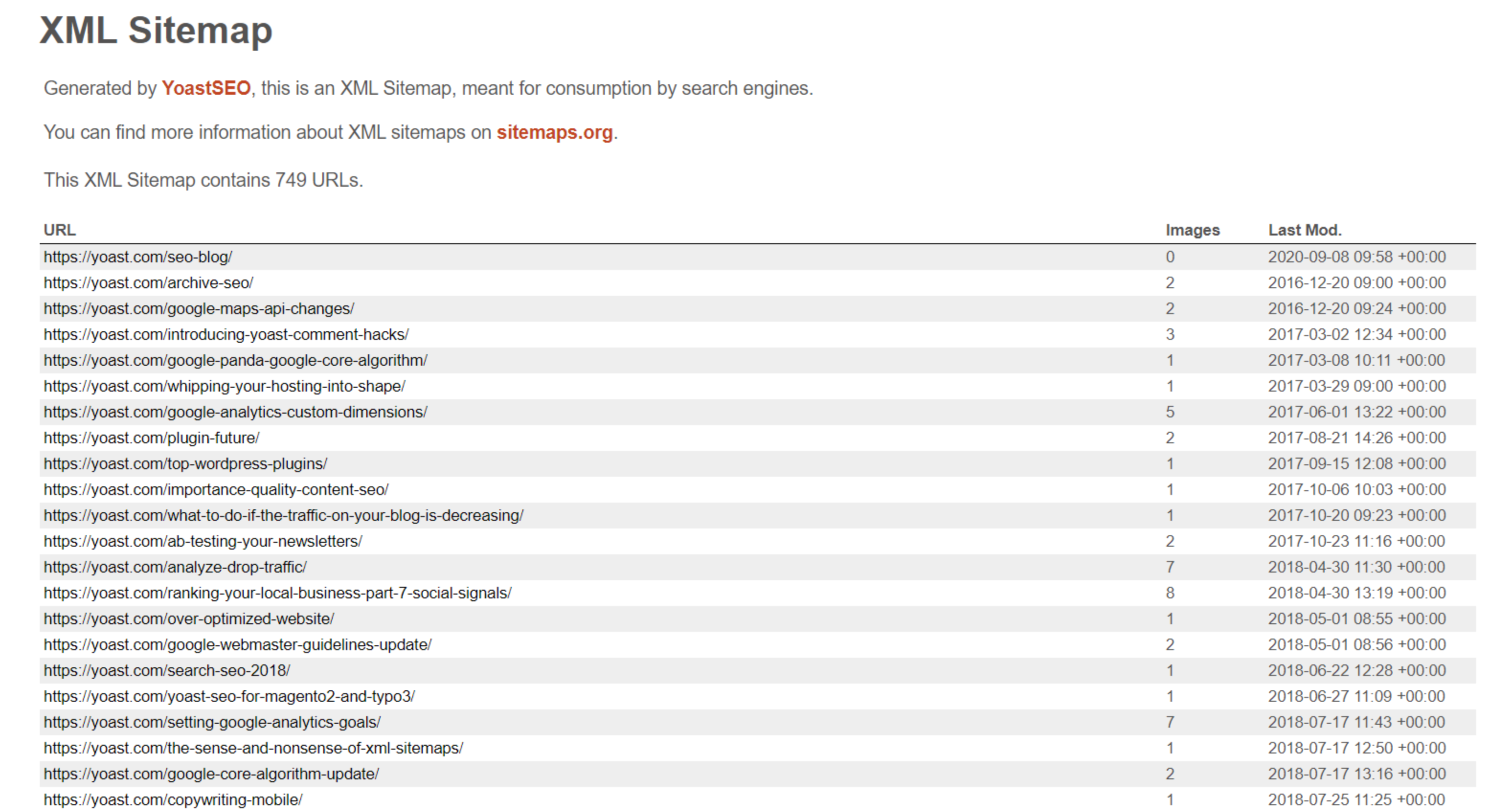FAQ: XML sitemaps in WordPress 5.5 and Yoast SEO
Since 5.5, WordPress comes with its own in-built XML sitemaps. Together with Google, we proposed to get this feature into every WordPress site out there. XML sitemaps offer an additional way for search engines to find out about your content. Now that XML sitemaps are a core feature in WordPress, over 41% of the sites on the web will have these enabled by default. Crawlers will be delighted to stumble upon all that fresh content. Cool, right? But what about the XML sitemaps in Yoast SEO?
This FAQ will answer some of your questions.
The new XML sitemap feature in WordPress 5.5 is very basic. The Yoast SEO XML sitemap has a number of enhancements and performance improvements.
Since Yoast SEO 14.5, we automatically turn off the default XML sitemap if you use the Yoast SEO sitemap. If you don’t have Yoast SEO and don’t want to use the standard WordPress XML sitemap, you can also disable it. Consult the documentation of WordPress XML sitemaps.
The current WordPress XML sitemap is very basic, while the XML sitemaps in Yoast SEO have been fully featured for many years.
With Yoast SEO, your sitemap is generated automatically and you can determine what goes into this sitemap. We also add properties like last modified date to help crawlers distinguish between what’s new and what’s old. We break up large sitemaps into smaller ones to help keep everything fast. Last but not least, we include images in our sitemaps so crawlers can discover these in one go. Of course, this is just a small sampling of the power of the Yoast SEO XML sitemaps.
At its core, an XML sitemap is simply a list of URLs in a text file. The XML sitemap helps search engine crawlers uncover your content. It helps them find and update content on your site which helps them get your content in the indexes for ranking purposes. The current version of the XML sitemap in WordPress is very basic and supports only a small set of content types.
If you disable the XML sitemap functionality in Yoast SEO, you’ll use the WordPress core XML sitemap.
If you prefer to use WordPress’ XML sitemaps to ours, and you wish to customize or alter the outputs (e.g., including or excluding specific content types), you can learn more from the documentation.

